Published in the Ocean Watch column, Honolulu Star-Advertiser © Susan Scott
December 31, 2004
I spent nine months of 2004 getting my boat ready to sail to Palmyra. During that refit, I lived and breathed marine systems and fell into bed each night exhausted. Once I get this boat to Palmyra, I vowed, I’m going to slow down and enjoy it.
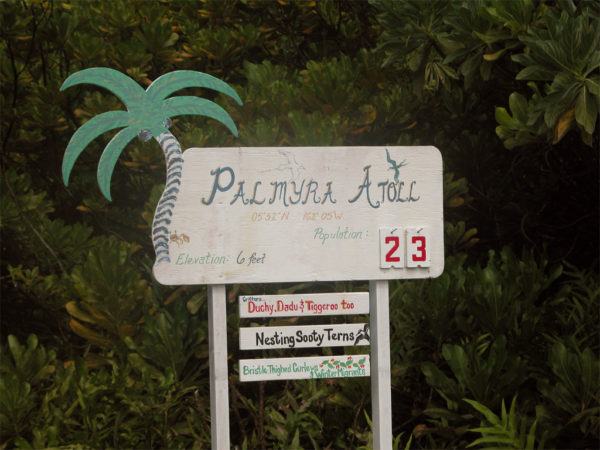
Well, I’m there now, and though the boat work still beckons, I’m putting it off for a while. I earned my prize of Palmyra, and I’m going to enjoy it.
There’s plenty here to enjoy. The place feels like a cross between Gilligan’s Island and Jurassic Park. Don’t worry about me, though. The people here are fun but not ditsy, and the dinosaurs are short.
Like Tern Island (in Hawaii’s Northwest Chain), Palmyra is a biological field station in an atoll designated a national wildlife refuge. But Tern’s atoll has desert islands; Palmyra’s has jungles.
The average rainfall here at 6 degrees North is about 175 inches a year. As a result, fresh water is nearly unlimited, and the vegetation grows lush.
Because people have brought a variety of plants to Palmyra over the years, the flora varies from place to place. Coconut palms dominate most of the atoll’s 15 islands, reflecting Palmyra’s copra plantation past.
In some areas, climbing plants cover nearly everything, including ground, trees and rusty remnants of World War II. This flourishing greenery has its appeal, but like Hawaii, the native plants suffer for it. Biologists are working on ways to save them.
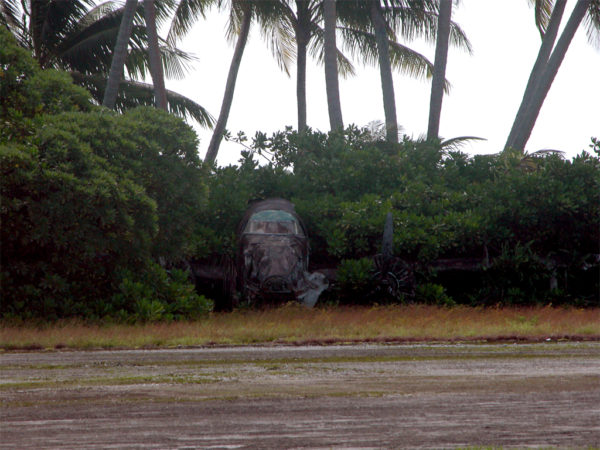
Plane
Beneath all the ferns, grasses and fallen coconuts, zillions of crabs scurry around like tiny dinosaurs. Some are fist-size hermits that hide in their turban shells when alarmed. Other land crabs grow to about 5 inches across and run sideways into holes and hollows when disturbed. If you corner these crabs, they raise their claws in defense but don’t deliver much of a pinch.
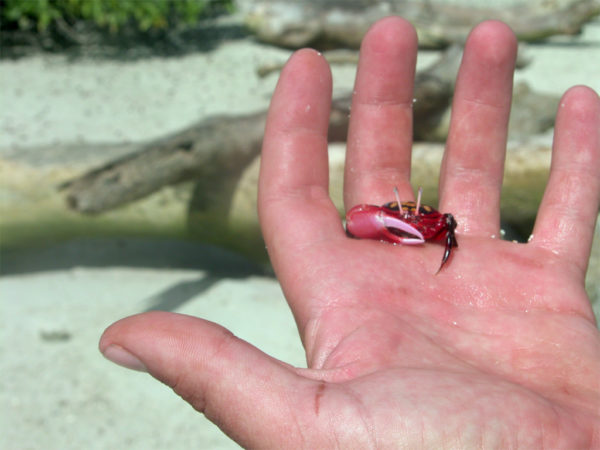
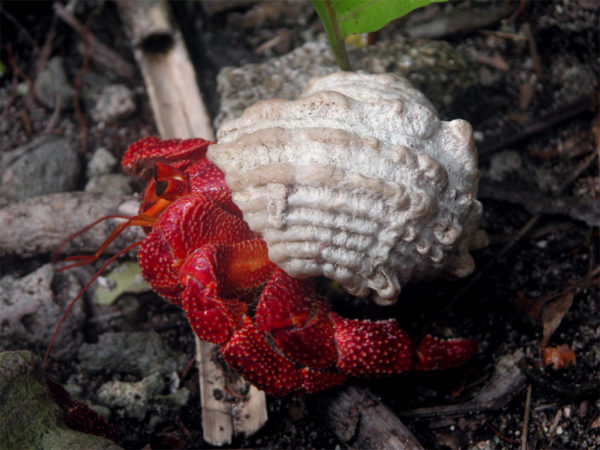
Coconut crabs, also called robber crabs, are another story. These endangered crustaceans grow to 30 inches across and weigh up to 10 pounds.
Watch the video of a robber crab stealing a coconut juiced machete!
QuickTime
You will need QuickTime Player to view this video. You can download it for freehere.
One front claw of the coconut crab crushes, the other tears. These big pincers, which open and shred coconuts, are formidable weapons. Fortunately for human fingers and toes, these stunning red, orange and blue crabs are shy creatures that would rather hide than snap.
Palmyra’s camp, currently in transition from canvas tents to wooden huts, has a Gilligan kind of charm. From whimsical signs shaped like sea turtles to astonishing gourmet meals to the cleverly painted outhouse, the artistic workers here keep me smiling.
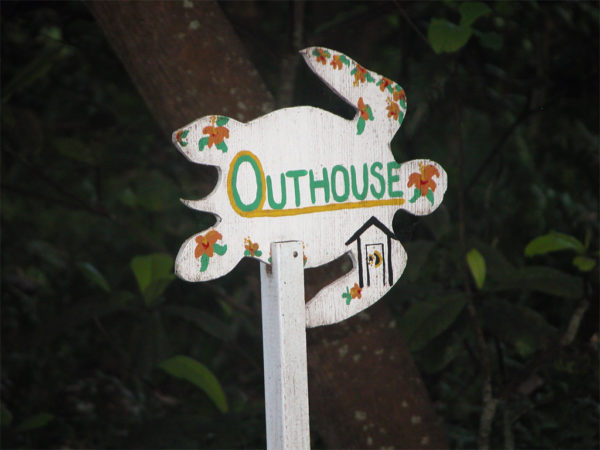
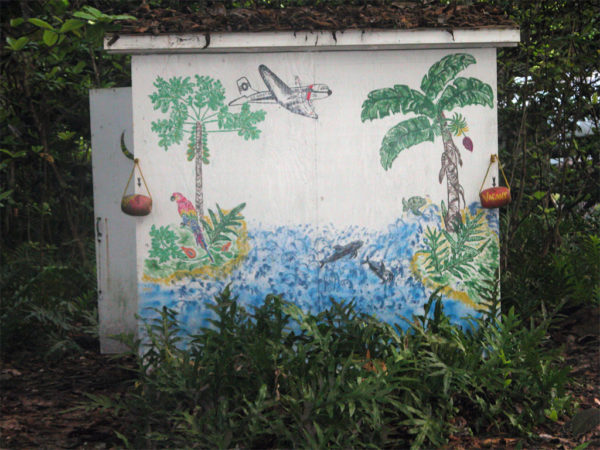
Outhouse
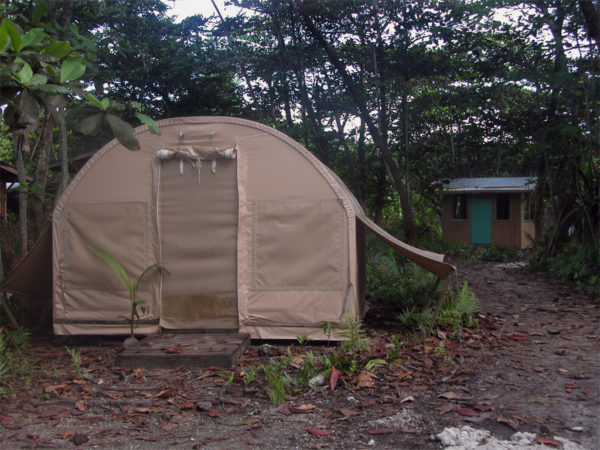
Tent/Hut
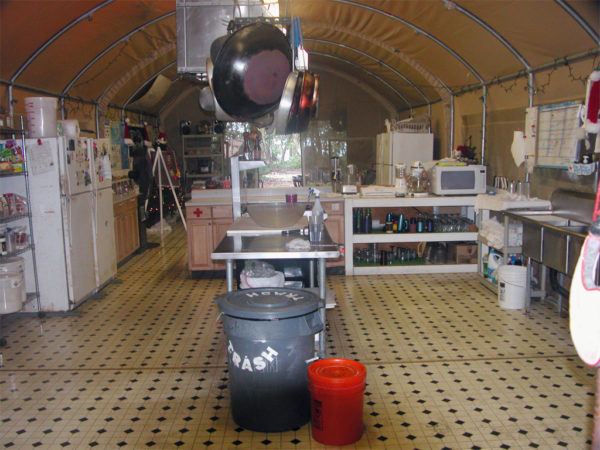
Kitchen
Eleven kinds of seabirds nest in Palmyra. They aren’t always visible because most perch in the tall trees. Still, fairy terns hover like angels over our heads, and thousands of sooty terns, also called wide-awakes, remind us day and night that this is indeed the site of seabird colonies.
Palmyra is well worth the work it took to get here. I can’t think of any place in the world I’d rather start 2005 than here in the West Lagoon.
Happy New Year. Pass the screwdriver.
Watch the video of a robber crab stealing a coconut juiced machete!